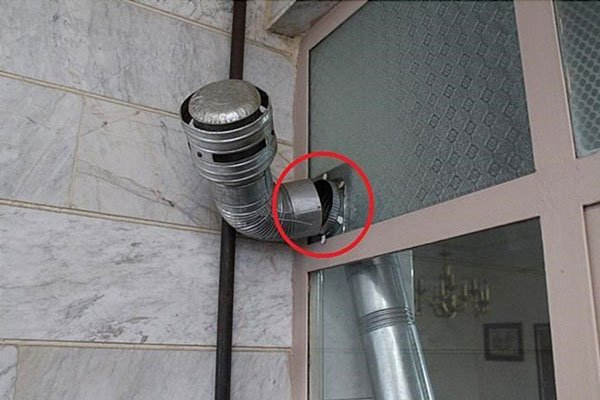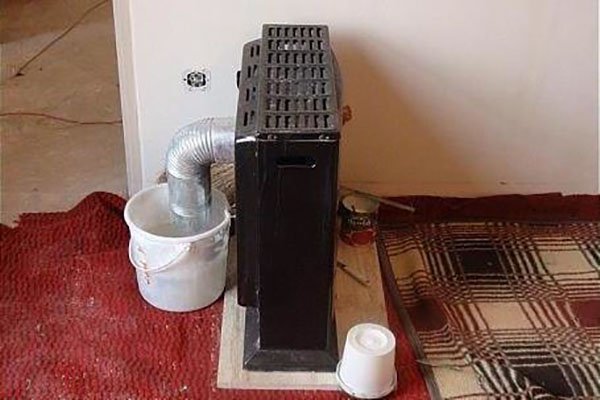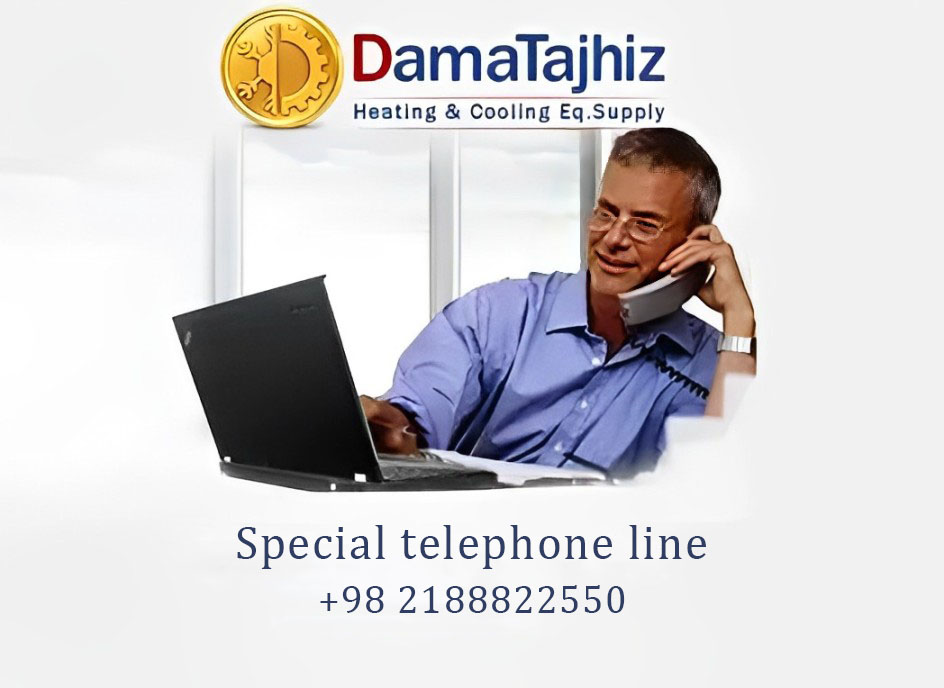We know that the most economical method of heating system in the country is to use gas fuel. One of the most common heating equipments are gas heaters, which must have the necessary approvals and standards in terms of safety and provide proper performance in terms of providing heating. But before you want to look for cheap heater prices to save money, it is better to pay attention to its important safety and standards.
The heat of gas heaters is not always pleasant and unfortunately, they usually lead to tragic accidents if the safety tips in installation and operation are not followed, causing serious financial and life losses to the family and society as a result of the use of non-standard heaters. Unfortunately, the lack of education and people's lack of awareness of safety points in the preparation and installation of gas heaters causes carbon monoxide poisoning and death. It is necessary to mention here that unfortunately, according to the statistics of the Forensic Medicine Organization, more than 840 people died in Iran due to carbon monoxide poisoning and suffocation in the year 1400 alone!
Therefore, in addition to the issue of the chimney and compliance with the safety principles and standards for the installation of the chimney for the types of gas heaters that we will explain below, before purchasing a gas heater, it is necessary to ensure that the heater is standard and that it must have a thermocouple, thermoswitch, and oxygen control system. The environment (ODS) and the gas pressure regulation system of the governor (Governor) should also be paid attention to. In this article, we are going to describe the safety tips for installing a gas heater, so that you have the utmost safety and accuracy in using a gas heater.

Safety tips related to gas heater chimney
Gas-burning equipment, like other heating equipment, needs oxygen for combustion, which must be supplied from outside the building. And on the other hand, combustion gases, including carbon dioxide and especially carbon monoxide, must be completely transferred to the environment outside the building through the chimney. Among the safety points in the installation of a gas heater that must be carefully considered in order to prevent the leakage of carbon monoxide gas resulting from the incomplete burning of gas and its life risks, are:
Inspection of air heater chimney suction
As you know and this important point has been pointed out many times everywhere, please check the power of smoke and gas suction in the chimney every year (yes, every year) before connecting the gas heater pipe to the chimney inlet (or turning on the heater). and make sure that the gases can escape through the chimney, that is, the chimney should not be cold when using the heater.
For this purpose, you can create a flame with cotton dipped in alcohol or gasoline and place it inside the chamber leading to the chimney. If the chimney can remove all the smoke created by the flame from inside the combustion chamber of the heater, it has enough suction power to do so.
Using the H cap
One of the dangerous things when using a air heater is the coldness of your heater pipe, which indicates that the chimney has been installed improperly and non-standard. The reason why the heater pipe is cold is that the toxic gases from combustion are spread inside the unit instead of leaving the heater chimney!
According to the conducted research and tests, the use of an H-shaped cap on the chimney outlet (if there is no specific blockage inside the chimney), is one of the ways to solve this problem and safety tips in installing a gas heater, which completely expels the smoke to the outside environment. They transfer Note that the cap H must be 60 cm higher than the chimney pipe.
The chimney pipe should not exit through the window or side wall
Basically, the chimney pipes should not come out of the window or the side walls, because in this case the ventilation is not done completely. But if necessary, you can do this temporarily by observing the following conditions:
- Creating fixed air vents under the doors for proper ventilation.
- Using a cap at the outlet and end of the chimney so that the wind flow cannot cause combustion gases to be pushed back inside.
- Ensuring that the chimney pipe is hot for the exit of combustion gases.
- Installation of the carbon monoxide alarm sensor.
- The slope of the horizontal pipes of the chimney should be slightly upward, and in order to create suction in the chimney, for every one meter of horizontal pipe, at least three meters of vertical pipe should be considered for the chimney.
- Not using short knees and sharp bends with an angle of less than 90 degrees.
- Exiting the chimney of the gas heater from the window or wall

Not using a common chimney
The pressure distribution inside the common chimney pipe from the beginning of the chimney to its outlet has a decreasing trend, which of course increases with the diameter of the common chimney and the total power of the heat sources, but on the other hand, the pressure drop in the smoke suction has a negative effect. put Therefore, it is forbidden to use a common chimney for gas-burning appliances whose combustion oxygen is not supplied from outside, and it is not allowed to connect an independent or joint chimney of gas-burning appliances without a fan to gas-burning appliances with a fan and vice versa.
In simple words, if a common chimney is used on the floors, when the heater on the lower floor is on and the heater on the upper floors is off, the combustion gases will automatically enter the environment of the upper floors and cause suffocation and even death of the residents of the upper floors!
Not placing the chimney inside the bucket of water
Due to the fact that carbon dioxide and carbon monoxide gases are not absorbed or dissolved in water, one of the most irrelevant and ineffective tasks regarding the installation of a gas heater is placing the end of the chimney in a bucket of water, which causes the release of .deadly gases in the environment. And this causes gassing of the attendees and if it is discovered late, it can cause people's death
Not using accordion tubes
In accordion pipes, due to the lack of connecting parts, the possibility of their air sealing at the connection point is low, and due to the high weight of accordion pipes, there is a possibility of the pipe exiting from the connection point to the chimney opening or creating a maze, which causes gases Lethal substances from combustion enter the environment. In addition, due to the low strength of the body of the accordion pipes, the heat and humidity inside the chimney after some time cause the body of these pipes to be perforated. Also, the pressure drop in accordion pipes is high and has a negative effect on smoke suction.

Not using the cutoff seam to exit the chimney pipes
According to the subject of the seventeen national building regulations, beams and the implementation of the roof of the floors of the buildings should be designed and implemented in such a way that a minimum distance of 20 cm to the perimeter beam is observed for the implementation of the chimney in the three corners of the wall or on the wall. In general, it is not allowed to pass the chimney through the gap (the distance between two adjacent buildings).
Not using the fireplace chimney instead of the heater chimney
It is recommended not to use the chimney of the fireplace instead of the chimney of the heater, but if necessary, you can do so by observing the following conditions:
- Basic installation of the chimney and directing it directly to the roof
- Ventilation of the entrance of the heater chimney to the fireplace
- Compliance with the upward slope in the elbow and chimney pipe
- Not using the corresponding fireplace
- Installation of carbon monoxide gas warning sensor in the environment
Standard gas hose length and heater pipe height
To connect the heater to the piping system, standard gas hoses must be used, and the length of the gas hose should not exceed 120 cm, because if it is more than this amount, the possibility of serious and dangerous problems will increase. One of these problems is the twisting of the hose, in which case the gas transfer is not done properly, and at the same time, it becomes more difficult to check the length of the hose for gas leakage.
Connect the hose from the main gas pipe to the gas inlet of the heater by two standard clamps. Do not use non-standard fasteners or wire for connection.
Also, every floor heater should have a distance of 45 cm from the surrounding and 75 cm from the top with other objects inside the building.
DamaTajhiz; The best prices and brands of construction equipment
final word
You can see the technical specifications of thousands of products, including gas heaters, on the website of Dematajhiz specialized collection (the first and most reliable source for online purchase of building facilities equipment). Make sure of your choice by guaranteeing the originality of the product, providing after-sales service, valid warranty and reasonable price. If you have any questions regarding brands, comparison, selection and purchase of household and office appliances, air conditioning equipment, heating equipment and engine room, etc., you can get advice from the heating experts during office hours by calling 021-88822550.
Related Articles
In order to get more information, it is recommended to read the articles related to the article on safety tips for installing a gas heater.
THE PACKAGE IS BETTER OR THE WATER HEATER
THE DIFFERENCE BETWEEN UNIT HEATER AND FAN COIL
THE VARIOUS TYPES OF JET HEATERS AND THEIR FUNCTIONALITIES
PERFORMANCE OF RADIANT HEATER
THE UTILIZATION OF THE UNIT HEATER

We are waiting for your call and look forward to meeting you in the specialized Damatajhiz collection
By sharing the above article on social networks, let your friends know about its important content.

